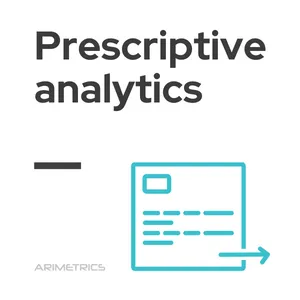
Definition:
Prescriptive analytics refers to analytics that seeks to provide optimal recommendations during the decision-making process. Unlike descriptive analytics or predictive analytics, prescriptive analytics determine the ways in which business processes need to evolve or be modified.
Evolution of Prescriptive Analytics
Like other analytical models, various technological advances facilitate prescriptive analytics. Increasing data storage media capabilities allow companies to store much more affordable information, such as through cloud hosting service solutions. Advances in network structure also enable the capture of a wider variety of information in new and more powerful ways.
Prescriptive analytics allows users to “prescribe” a number of different possible actions and guide them towards a solution. It attempts to quantify the effect of future decisions in order to advise on possible outcomes before decisions are actually made. They not only predict what will happen, but also why it will happen, with recommendations regarding actions that will take advantage of the predictions.
Prescriptive vs. descriptive vs. predictive analytics
These analytics go beyond descriptive and predictive analytics by recommending one or more possible courses of action. They essentially predict multiple futures and allow companies to evaluate a number of possible outcomes based on their actions. Prescriptive analytics uses a combination of techniques and tools such as business rules, machine learning algorithms, and computational modeling procedures. These techniques are applied to the contributions of different data sets, including historical and transactional data, feeding on real-time data and large volumes of data.
Prescriptive analytics is relatively difficult to manage and most companies are not yet using it on a regular basis. When implemented correctly, it can have a big impact on the way companies make decisions on their profitability.
